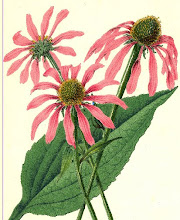
Sceletium tortuosum is a succulent South African plant that is receiving a lot of attention by researchers looking for an alternative to kava kava and St John’s Wort (particularly relating to energy, depression and low moods). Anecdotal evidence centres on its use by indigenous tribes, where the herb is masticated or smoked to produce a euphoric awareness that mellows into a state of relaxation. Herbs In A Bottle is introducing this herb into our product range
Pharmacology
The mood-enhancing properties of sceletium are the result of several alkaloids which include mesembrine, mesembrenol and tortuosamine. These interrelate with the dopamine and serotonin receptors in the brain. The major alkaloid present in Sceletium is the powerful serotonin-uptake inhibitor Mesembrine.
Research strongly indicates that doses of Sceletium can elevate moods and decrease anxiety, stress and tension. There are no hallucinogenic incidents, and no withdrawal symptoms after long-term use. Very few side-effects have been reported. There are no recorded contraindications (but because of the neuro-receptor activities of Sceletium it is possible there may be interactions with other pharmacokinetic drugs.
Safety in pregnancy is not proven.
Sceletium and Mesembrine
Pharmaceutical Biology
1998, Vol.36, No.3, pp. 173-179
© Swets & Zeitlinger
The Distribution of Mesembrine Alkaloids in Selected Taxa of Kanna and their Modification in the Sceletium Derived `Kougoed’
Michael T. Smith , Courtney R. Field , Neil R. Crouch and Manton Hirst
Univ. Natal, Botany Dept., Pietermaritzburg, South Africa Natal Herbarium, Ethnobotany Programme, National Botanical Institute, Kaffrarian Museum, Kingwilliam’s Town, South Africa
Twenty species from nine genera of the Mesembryanthemaceae (Aptenia, Bergeranthus, Delosperma, Drosanthemum, Glottiphyllum, Lampranthus, Oscularia, Ruschia, and Sceletium) as well as the reportedly psychoactive preparation `kougoed’, prepared from `fermenting’ Sceletium tortuosum, were screened for the presence of the mesembrine alkaloids. Using gas chromatography (GC) with a nitrogen-phosphorous detector (NPD) three putative alkaloids were detected in Sceletium tortuosum whose mass spectra corresponded to those of 4’-O-demethylmesembrenol, mesembrine and mesembrenone. All the Mesembryanthemaceae plants investigated were shown to have Dragendorff-positive compounds on thin layer chromatograms (TLC); those containing mesembrine alkloids, as shown by later GC MS analysis, exhibited similar Rf values to the Sceletium alkaloids. Howev! er, using the technique employed in this study which encompassed the use of column and gas chromatography, the only genus containing mesembrine alkaloids to any significant extent was Aptenia. Alkaloid levels were found to be extremely low in all other taxa investigated.
When a `modern’ technique for the preparation of a fermented Sceletium product, `kougoed’, was carried out it was found that levels, as well as the ratios, of the three alkaloids changed markedly. Substantial increases in total alkaloid levels were observed when the Sceletium material was crushed and bruised prior to drying for alkaloid extraction whereas no such changes occured when intact plants were oven dried at 80°C prior to alkaloid extraction. It is speculated that of the many potentially usable Mesembryanthemaceae plants available to the indigenous peoples, Sceletium was selected because it is the only genus with alkaloid levels high enough to! eli cit a psychoactive response. The traditional preparation technique also appears to have evolved as a method of producing a dry, stable, and relatively palatable preparation of increased pharmacological activity.






